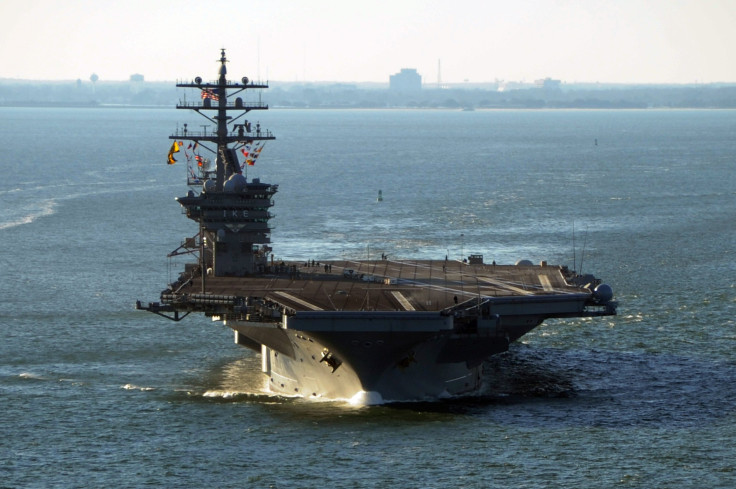Fight Against ISIS: US Aircraft Carrier Eisenhower Joins Effort Against Islamic State Group In Middle East

About 7,000 crew members of the USS Dwight D. Eisenhower left Naval Station Norfolk in Virginia on Wednesday to head to the Middle East to join the fight against the Islamic State group, Navy Times reported.
This deployment represents the Navy’s first under the Optimized Fleet Response Plan, which aims to standardize training and establish seven-month trips — a change from the nearly nine-month deployments many ships have taken in the past. The longer cruises were often tough on sailors and on the aircraft carriers, according to the U.S. Naval Institute, but there has been discussion of whether the new deployment cycle would leave gaps of time without carriers in the Middle East.
“The Dwight David Eisenhower Strike Group deploys to relieve the Harry S. Truman Strike Group and will be supporting airstrikes against ISIS, answering the nation's call and stepping up the fight,” Adm. Phil Davidson, the head of Fleet Forces Command, told Navy Times, using another name for the terrorist organization.
Before the Truman Carrier Strike Group arrived in the Middle East, the U.S. operated for two months without an aircraft carrier there after the USS Theodore Roosevelt left last winter. Longer-than-expected maintenance on the Dwight D. Eisenhower led it to switch deployments with the Truman.
The Dwight D. Eisenhower’s voyage also marks the beginning of the Atlantic side of the Navy’s Great Green Fleet mission, which is testing ships using energy-saving tactics and alternative fuels. The program started this year on the West Coast when the Stennis Carrier Strike Group began running on a biofuel mixture of petroleum and beef fat. The Eisenhower carrier will use a similar blend.
The Eisenhower Carrier Strike Group is commanded by Rear Adm. Jesse Wilson, who took over in December as the soldiers ramped up training for this mission. The group will be focused on fighting ISIS from the sky. While the previous two carriers that fought the terrorist group set ordnance records, Wilson told Navy Times he is not focused on how much ammunition his sailors will drop.
“We don’t focus on records,” Wilson said. “We are well-trained to drop what needs to be dropped and make it count.”
© Copyright IBTimes 2025. All rights reserved.






















